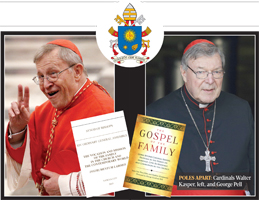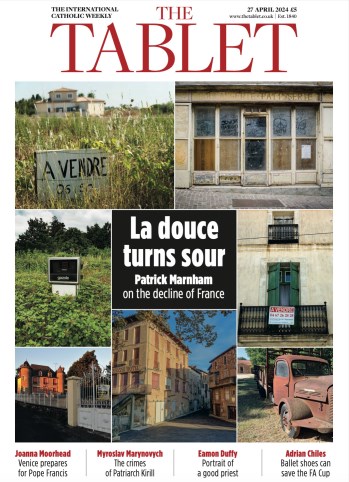Tomorrow sees the re-convening of bishops in Rome to consider marriage, divorce and sexuality. Last year’s meeting brought bitter disagreements out into the open and the rows have continued to simmer ever since
Bishops who attended synods before 2014 were under no illusion that their discussions were either relevant for the people of God or listened to by the Pope and the Curia. The membership of the synod today is no different – there are still no women except among the auditors. The rules have not changed, but the meaning and purpose is different. The synods of 2014 and 2015 have broken new ground: something happened in Rome last October, something has happened during the inter-synodal period, and something is about to happen next month – and afterwards.
It is almost unimaginable that the process started by Francis will come to nothing. His decision to focus two synods in 12 months on a single subject challenges the institutional Church’s belief that the issues it raises – the modern family and marriage, divorce and communion, sexuality and homosexuality – have been definitively settled for all time.
The Church is beginning to acknowledge a reality that, in many cases, is significantly distant from the ideal. The synod of 2014 did not have a prepared script but developed with a substantial number of exchanges between members with different understandings of the relationship between the Gospel and the way the Church announces it and lives it as a community of believers.
The final relatio was voted through by the members: all its paragraphs received an absolute majority, and just three paragraphs were a few votes short of the required two-thirds majority. Francis opened the inter-synodal period with his decision to publish the relatio with the votes received recorded beside each paragraph to show to the Church the state of the consensus among the representatives of the world episcopate.
The preparatory document for the 2015 synod, the lineamenta, sought wide-ranging input and asked episcopal conferences to involve all groups within the Church. Despite the fact that only a few bishops’ conferences worked systematically to prepare for the synod, and even fewer mobilised lay associations and academic institutions, the working document, the Instrumentum Laboris, published in June by the Vatican, represented a step forward. The Instrumentum showed that there is broad agreement on several issues, especially on Cardinal Walter Kasper’s proposal that, in certain cases, divorced and remarried Catholics should be allowed to receive the sacraments following “a journey of reconciliation or penance, under the auspices of the local bishop”.
There are those who hope that Francis’ recent decision regarding the annulment process, announced in two motu proprios on 8 September, will take the issue of communion for divorced and remarried off the table. But this is unlikely to happen. The motu proprios show his intention to act where there is consensus but not to silence the synod on issues where there is no unanimity. Francis is a “pope of process” and the process is still wide open.
In fact, these motu proprios and the decision to call the Year of Mercy are of profound relevance: the first flows naturally from the 2014 synod; the second is an act of dialogue with the forthcoming synod. It does not hijack the agenda or anticipate its conclusions but reminds the Synod Fathers of the horizon of expectations Francis is seeking in the Church.
The ideologies that envelop in a crushing embrace much of the theological thinking about family and marriage in the Church today must be disturbing for such a profoundly anti-ideological pope as Francis. The most striking feature of the period between the two family synods has been the entrenchment of opposing positions. The disagreement is not between liberal and conservatives, but between pastors and ideologues.
At the beginning of September, there appeared in the conservative US magazine First Things an appeal against an interpretation of Humanae Vitae that appears in paragraph 137 of the Instrumentum Laboris. Signatories believe the paragraph undermines the teaching of the encyclical. Their gesture speaks volumes about their anguish following the pontificates of John Paul II and Benedict XVI. In the US, the bishops elected as members of the synod are certainly not among the enthusiasts of Francis. On the other hand, American Catholic theologians and the laity are too divided to work together in a synodal process.
Those who are paying closest attention to Francis are those who do not share his views. Firm bridges have been built between the leaders of the resistance in America, in the Curia and in Italy, as illustrated in books published by Ignatius Press. The most recent, Eleven Cardinals Speak on Marriage and the Family, includes an accusation that the leaders of the 2014 synod, appointed and confirmed by Francis, rigged the process.
Africa is usually enrolled in the “culture wars” alongside the US, but the picture is more complex than that. In June, at a wide-ranging meeting in Ghana of African moral theologians, several academics and bishops called for a broader scope of discussions at the 2015 synod to include migration and displacement, high rates of domestic violence, mortality rates for women giving birth and the dowry system.
In France, Germany, Switzerland and Spain, there have been important reflections. In Italy these have come from the theological faculty of Milan, the ecumenical monastic community of Bose (near Turin), and the semi-official journal of the Vatican, La Civiltà Cattolica, under the editorship of Antonio Spadaro SJ, who conducted the celebrated interview with Pope Francis six months after his election.
The Jesuit-run journal has published a stream of essays debating the issue of marriage in post-modern and secular society, and in light of the historical-critical studies on the origins and history of marriage. In doing so it has reprised the role it played during Vatican II. The essays, together with interviews with cardinals Cottier and Schönborn, have just been republished as books, Family as a Field Hospital and Truth and Mercy, both edited by Fr Spadaro.
The Synod will also see parallel informal sessions held in public of a kind that were typical in Rome at the time of the council. A network under the heading “Catholic Women Speak” has prepared a book giving women’s perspectives on marriage and the family, which were presented in Rome this week (see pages 6-8). The Church faces tensions that were hidden for a long time, not tensions that Francis created. There is a sense of urgency that comes from the gap not only between the Church and the world, but within the Church itself.
The big picture of the Church dealing with family and marriage in the modern world has changed with the legalisation of same-sex marriage in Ireland and the US. It can be considered one of the “signs of the times” the constitution Gaudium et Spes of Vatican II alluded to in 1965.
The Pope has not started a civil war, and the subtle threats of schism coming from the most ideological of his opponents says a lot about their ecclesiology. There is no memory in modern church history of a pope called to defend himself from the accusations – coming from self-appointed guardians of orthodoxy – of being non-Catholic, a heretic, a communist. The question now is whether there will be at the synod a solution to these tensions, and, if so, what form it will take. Key to keeping the discernment process open will be to avoid a bombshell of the kind that greeted the publication of Humanae Vitae.
This synod is taking place at a pivotal moment in a two-stage strategy adopted by Pope Francis. In the first stage, the Pope has finally started to implement Vatican II in terms of institutions and procedures – the synod in relation to the Curia – in order to revitalise the idea of a more collegial Church. This may proceed more easily than on other issues where the Church needs more progressive changes.
Such progressive change is stage two, which is about making changes both on issues such as women and homosexuality, and on procedures. It requires a shift from a collegiality based on the episcopal guild to a synodality that is open to new forms of collective discernment involving all members the Church.
Francis’ view of the future Church is based on an “ecclesiology of the people”, and in the inter-synodal period the people of the Church have sent signals that need to be interpreted. This will require more than the three weeks of debate among the bishops at the synod in Rome.
Massimo Faggioli is associate professor of theology at the University of St Thomas, Minnesota.





 Loading ...
Loading ...
What do you think?
You can post as a subscriber user...
User Comments (0)